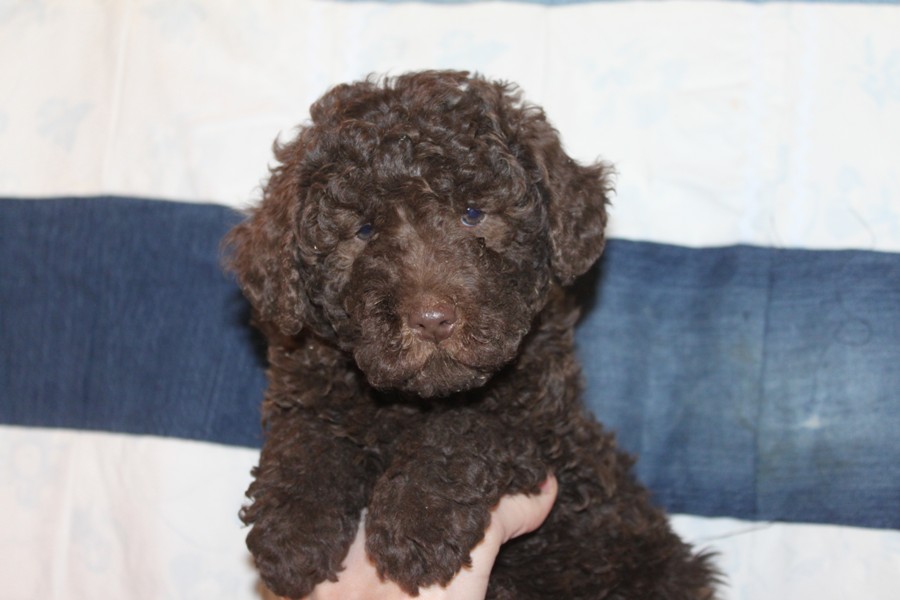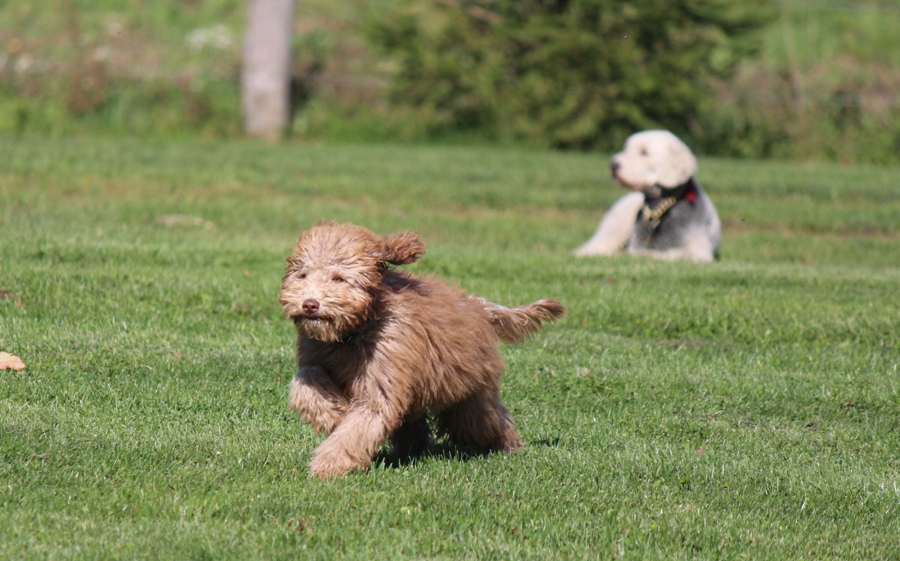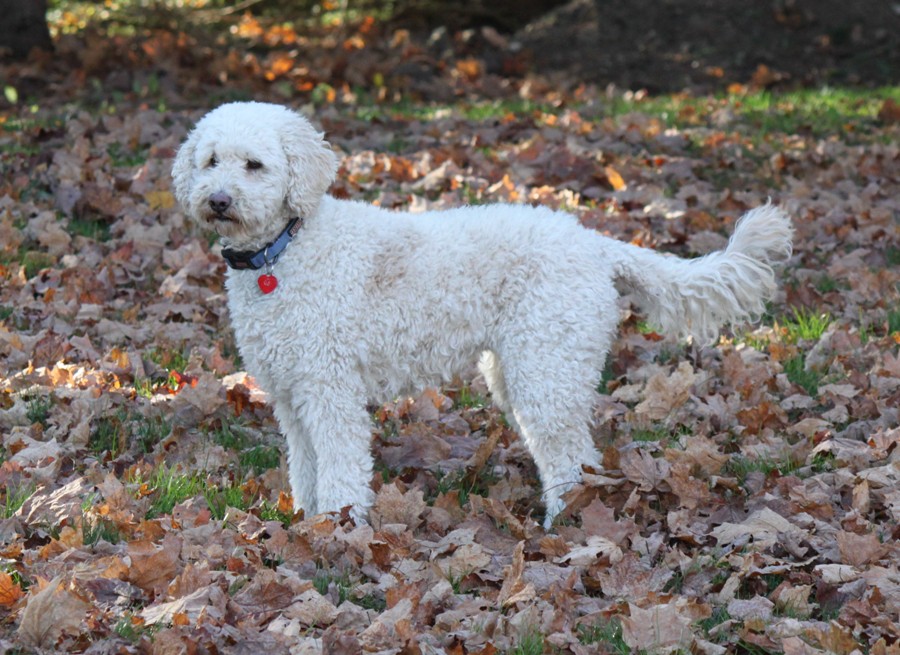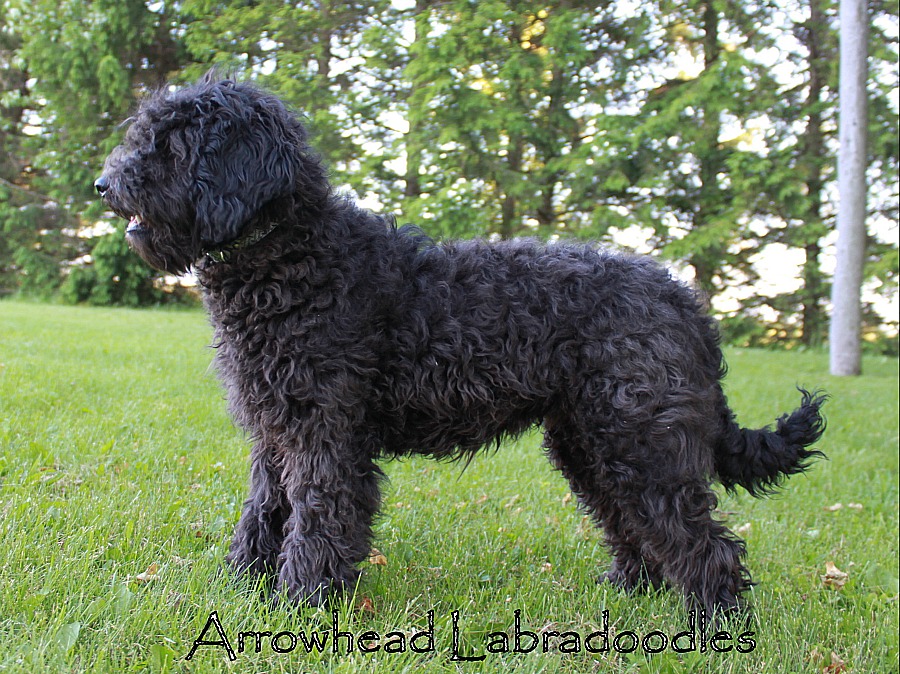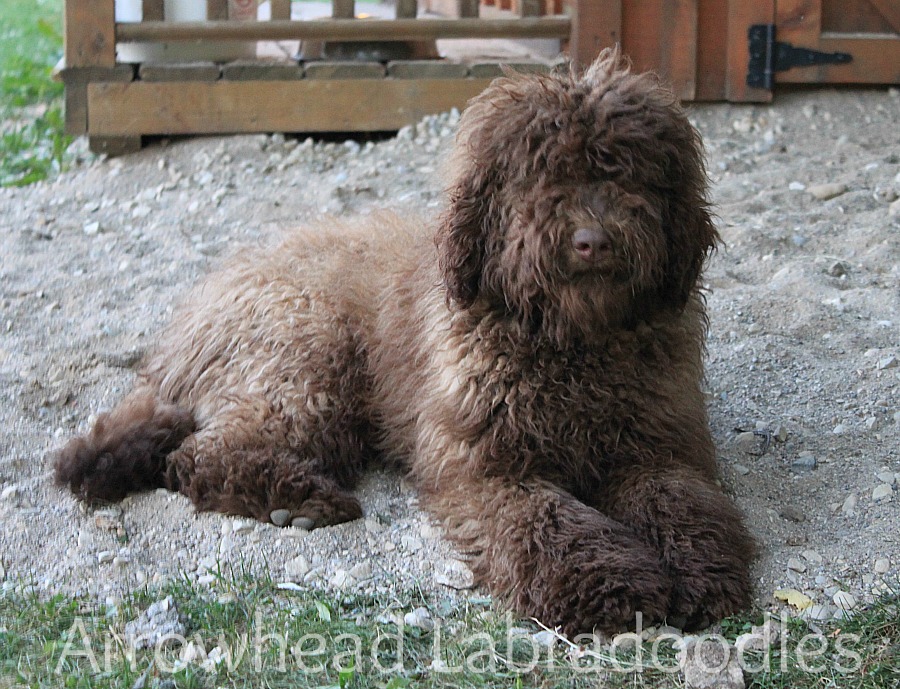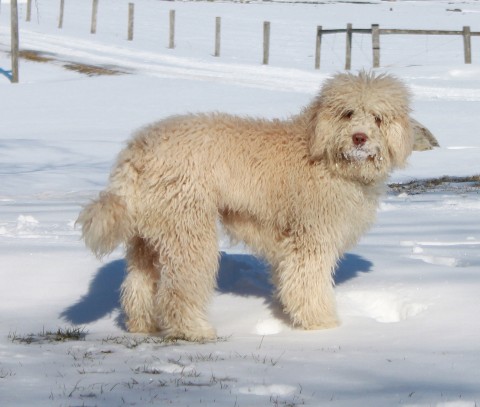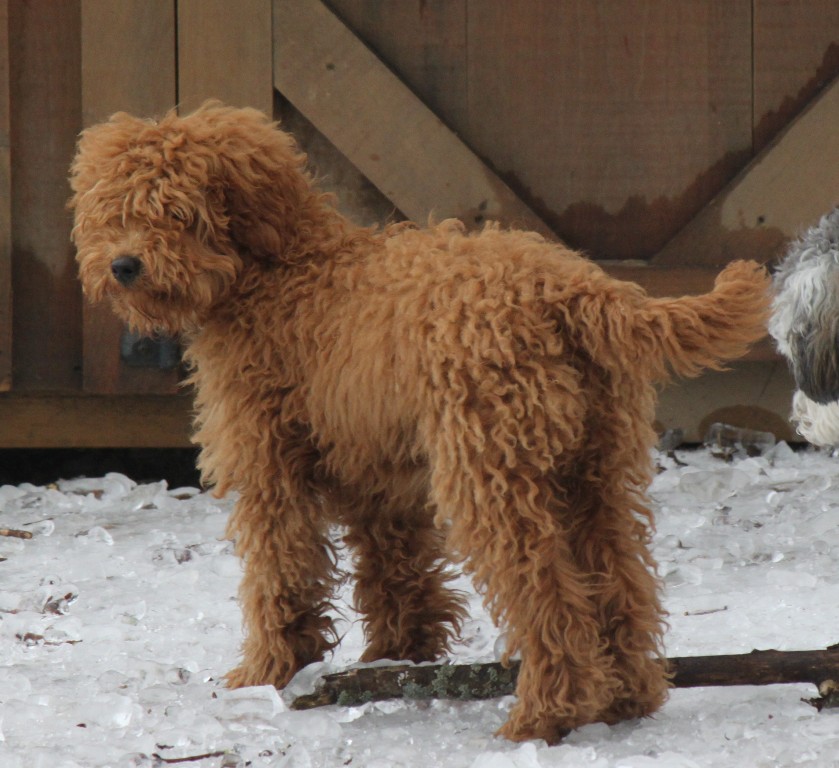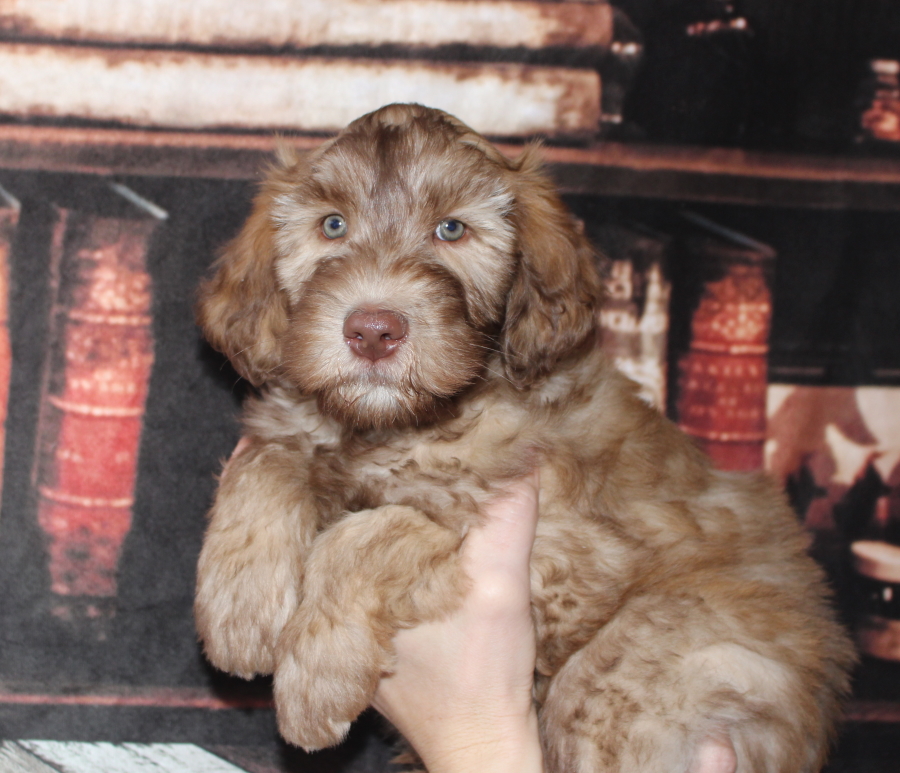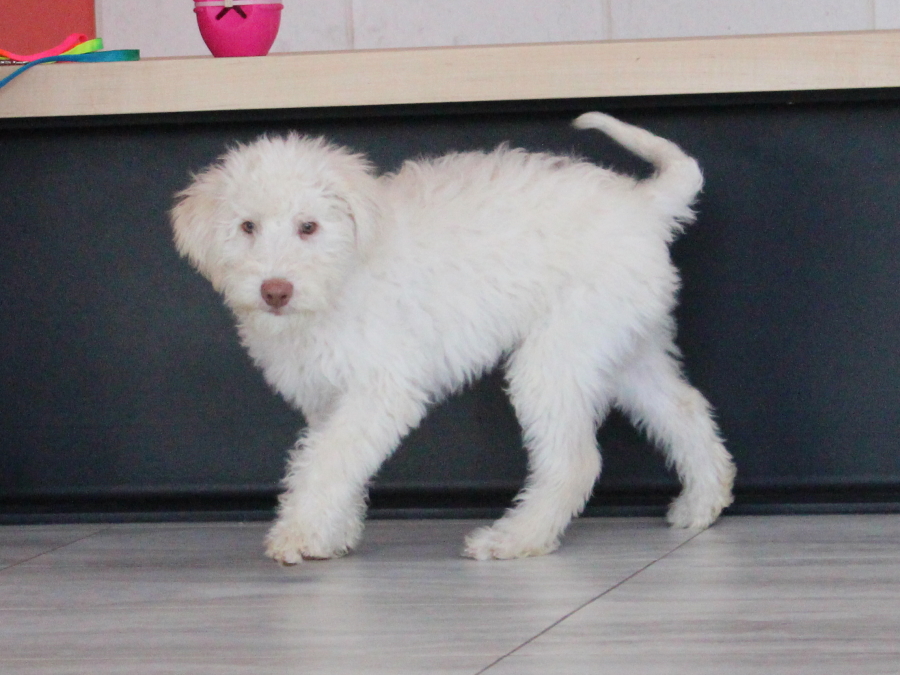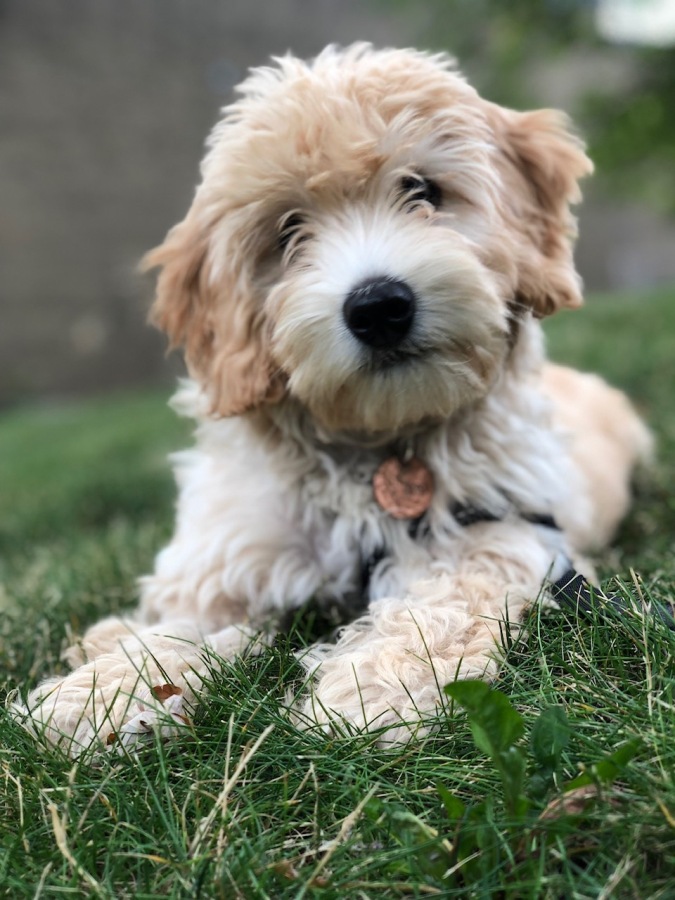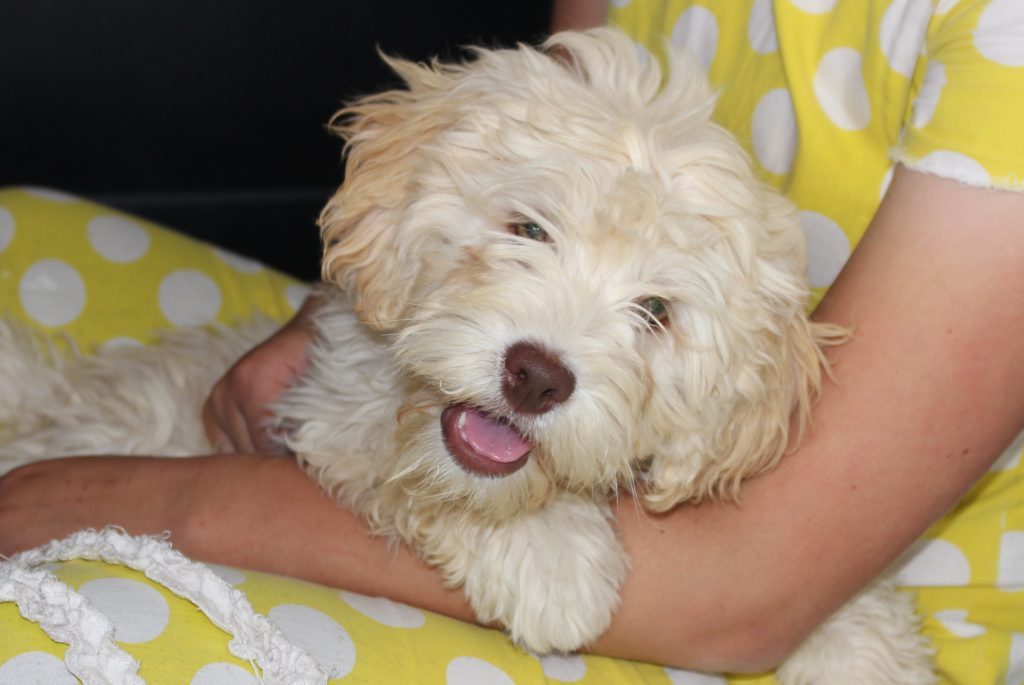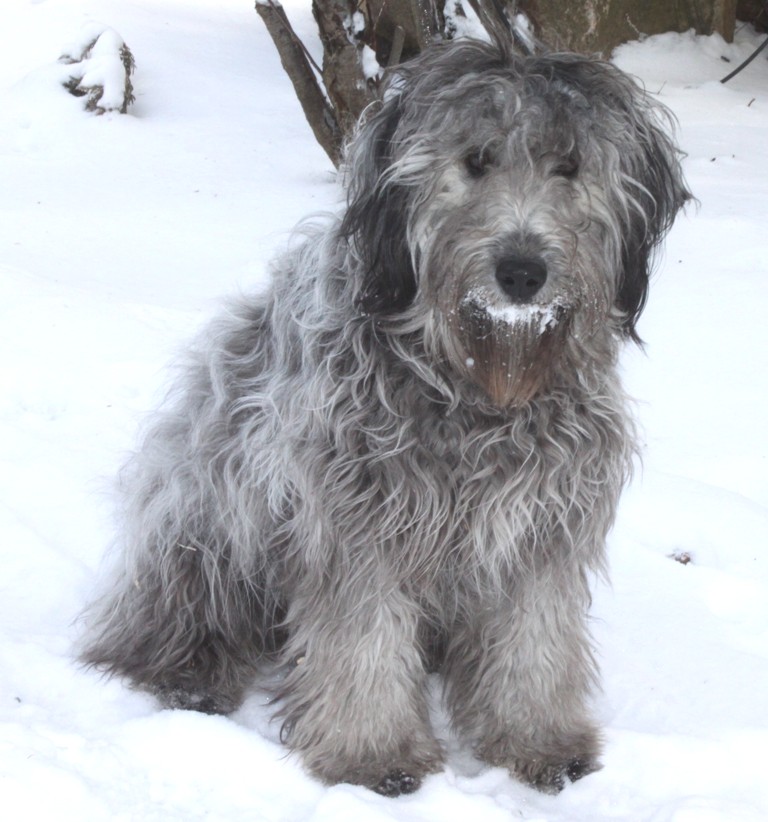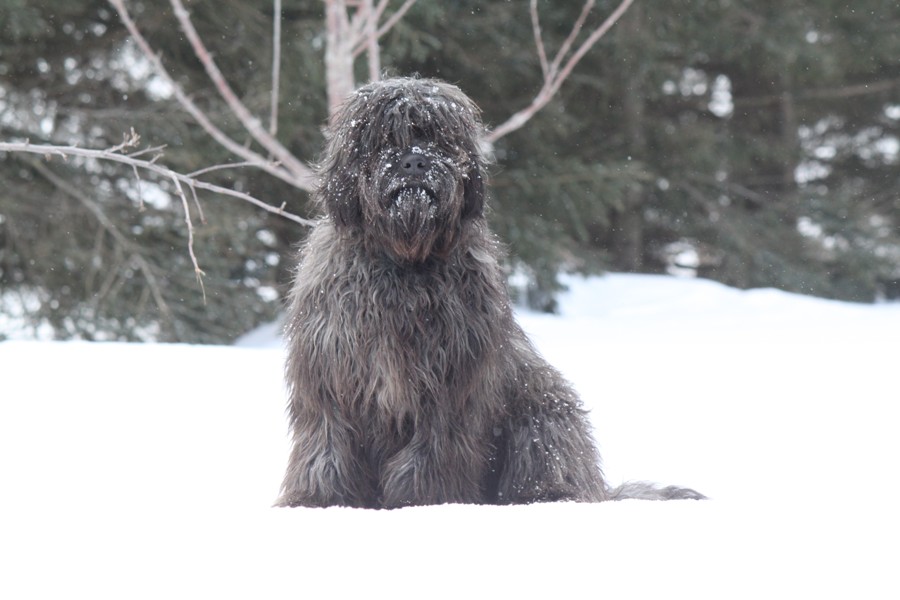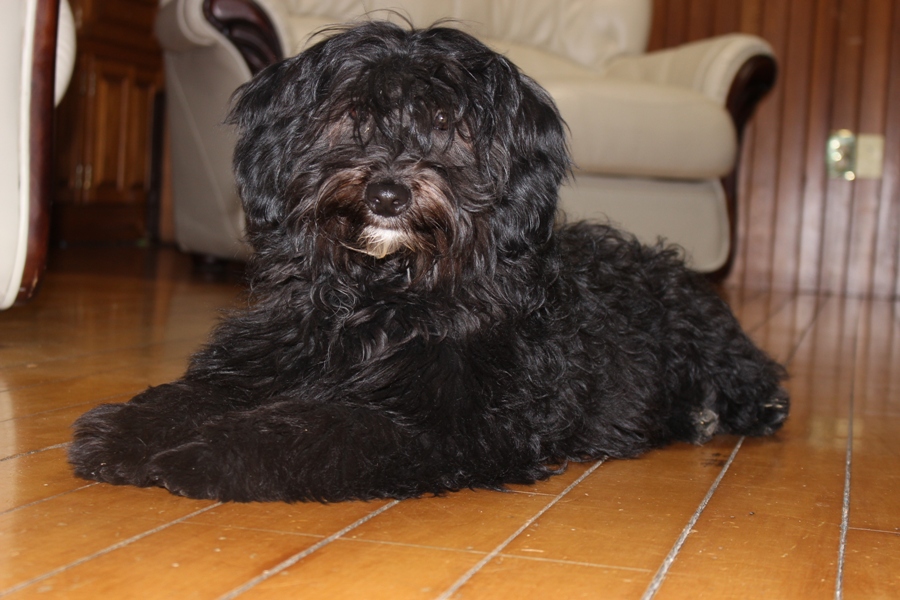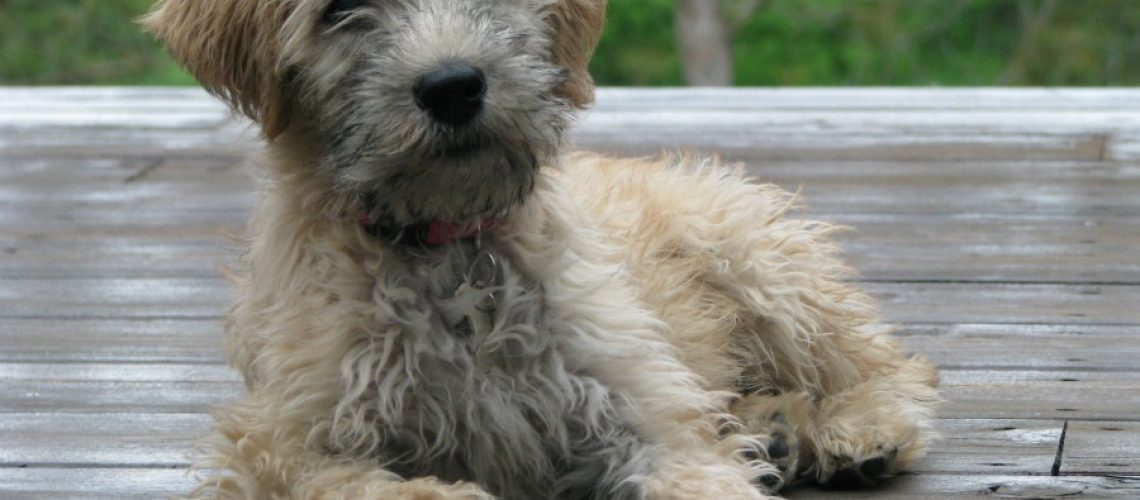
Cobberdog coat types

Cobberdog coat types have been changing since the earliest Soft Coated Labradoodles (Cobberdogs) were bred in 2009. Original coats after the Irish Wheaten was infused into the Australian Labradoodle were varied, some course, some fine and cotton like, and others almost perfect full fleece. With continued selective breeding and observance of how each coat type matures we have organized Cobberdog coat types into 3 categories.
Before we go into the Cobberdog coat types it is important to understand the genetic origin and why the coats have the varied stages. The Irish Soft Coated Wheaten Terrier coat goes through three distinct changes on its way to maturity. We have experienced this first hand and have documented our findings. The dog below is Bobbi, our Irish Soft Coated Wheaten Terrier we have used to carry out infusions into several of our previously Labradoodle lines, now better known as Cobberdogs.
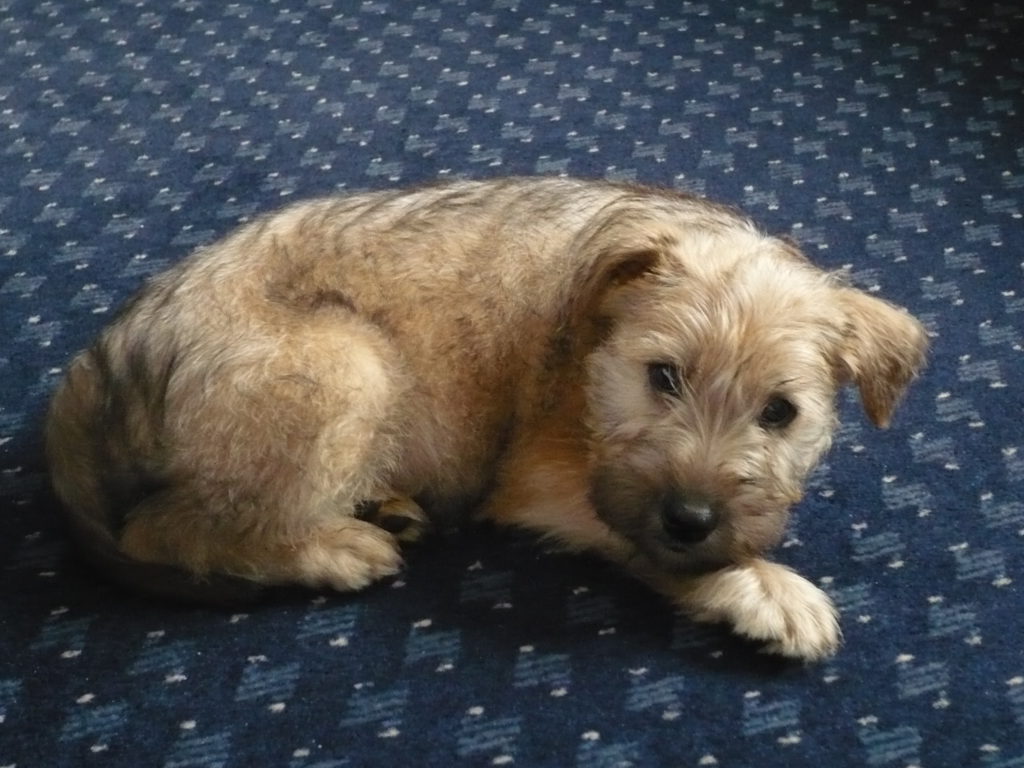
Irish Wheaten puppy (8 weeks) 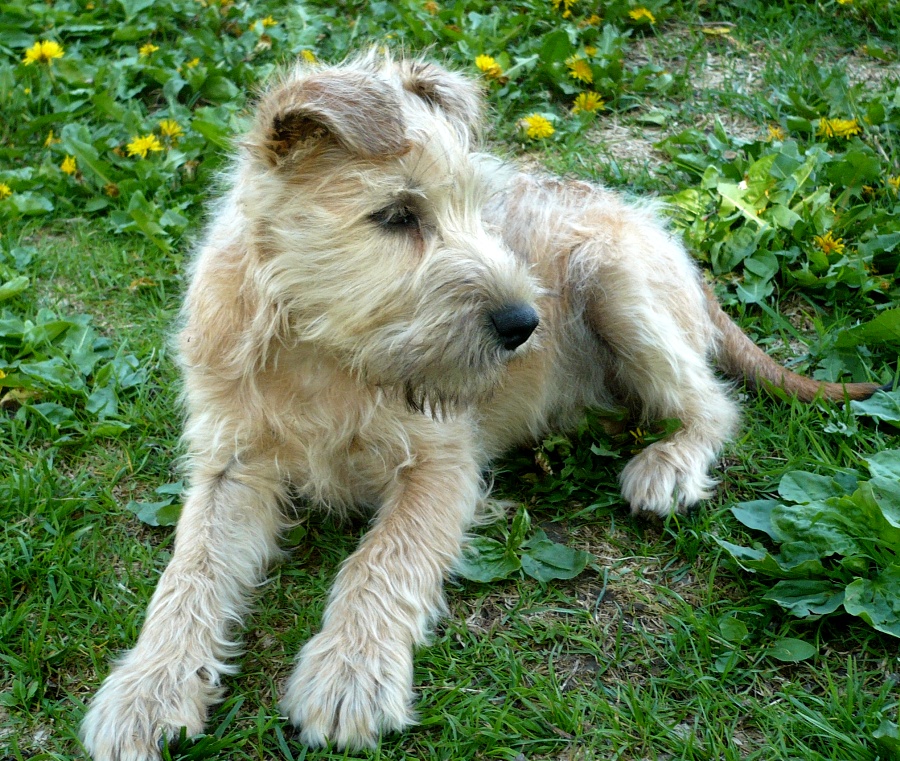
Irish Wheaten adolescent (16 weeks) 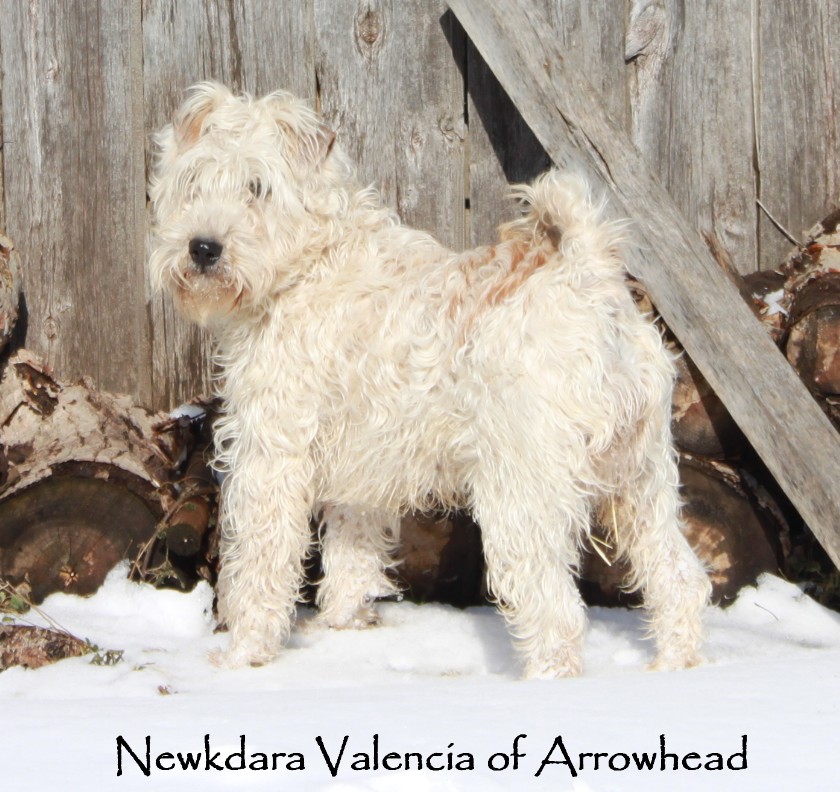
Irish Wheaten nearing maturation (2 years) 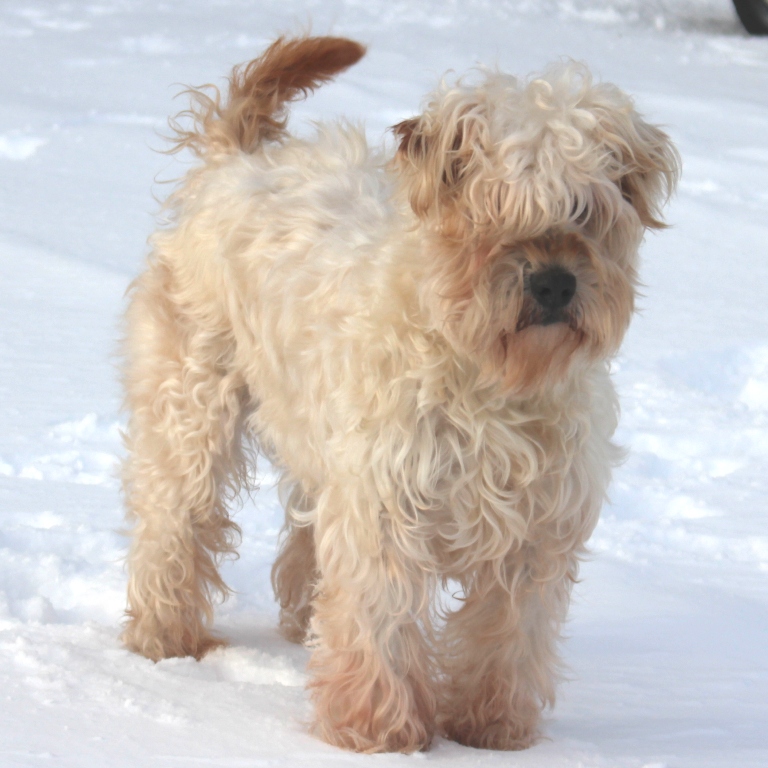
Irish Wheaten full maturation (10 years) 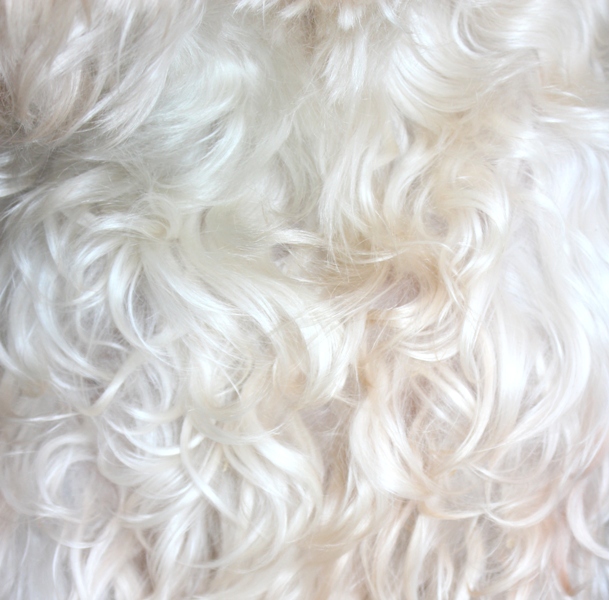
Wheaten fleece (front) 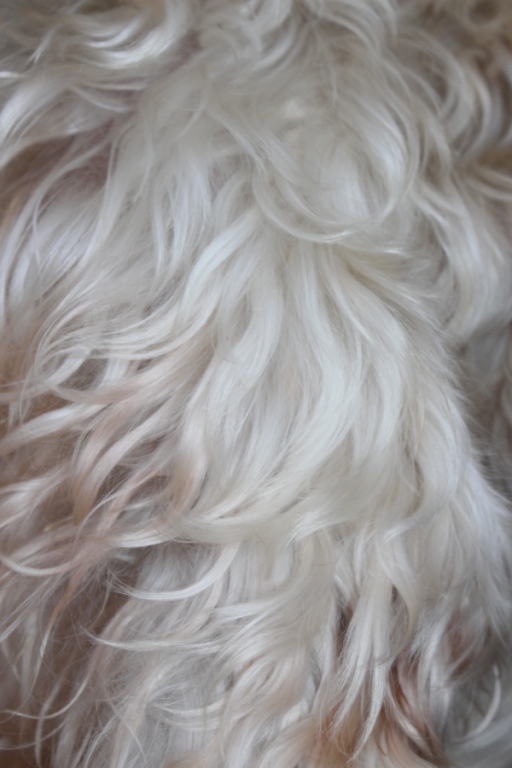
Wheaten fleece (back)
The early infusions were done with wool coated Australian Labradoodle females, and the results were quite diverse, and with time they became more consistent, and predictable. The gallery below shows the typical Australian Labradoodle type we worked with when the infusion of Wheaten was first carried out, in the paragraphs that follow I will describe the three types of fleece that have evolved from this infusion.
F2 Cobberdog puppy coat variations (puppies from the same litter, pictures taken the same day)
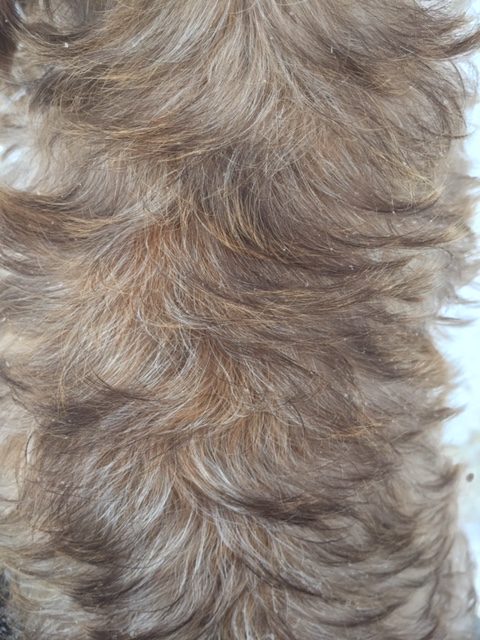
F2 Cobberdog puppy coat 10 weeks 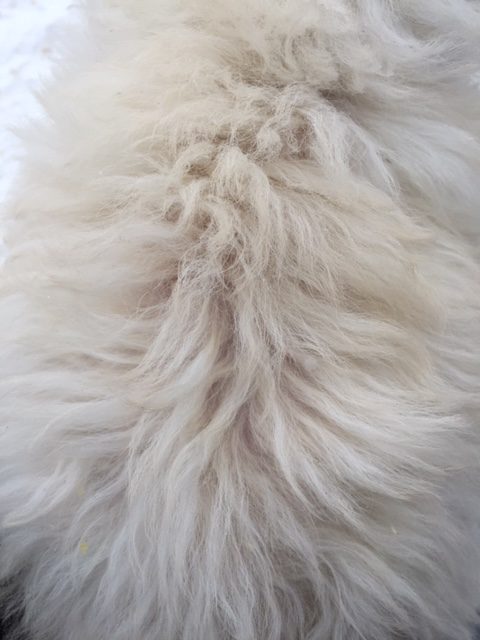
F2 Cobberdog puppy coat 10 weeks 
F2 Cobberdog puppy coat 10 weeks
First we will explore the course puppy Cobberdog coat type. These puppies are born with very straight coats, soft from birth to around ten weeks, and course and wiry during adolescents until around two to three years of age when the coat matures, turning mostly silky fleece as with the exception of some kemp hair (sporadic course hairs that disappear slowly as the dog ages) on the back very similar to the Irish Wheaten. These coats have strong Wheaten colour genes as well and are often born with masks and dark shades, then turn light coloured as they mature.

F1 Wheaten/Australian Labradoodle infant 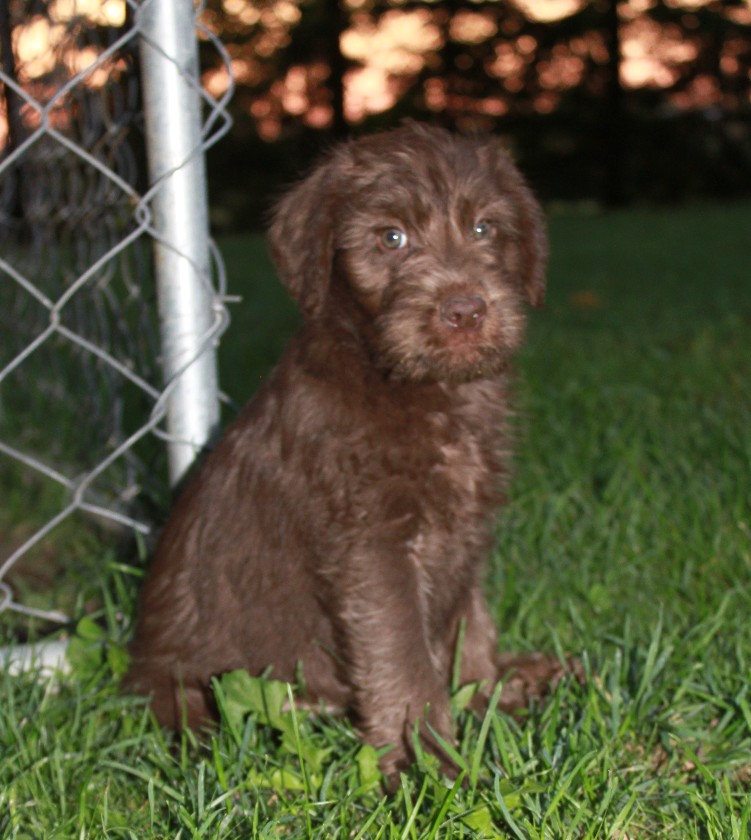
F1 Wheaten/Australian Labradoodle puppy 
F1 Wheaten/Australian Labradoodle dog 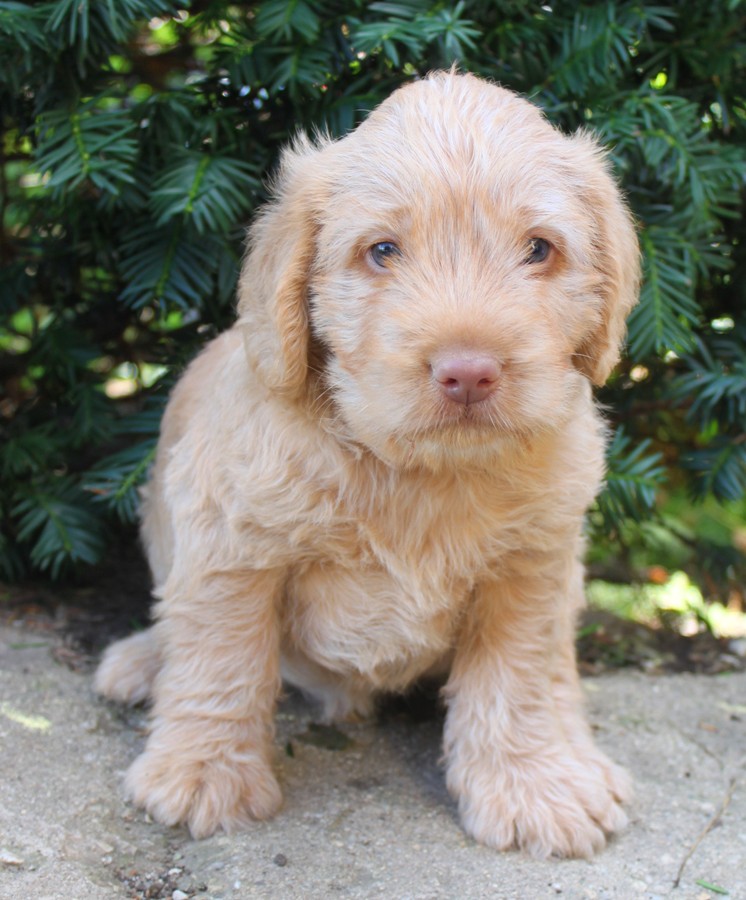
F2 Cobberdog puppy (4 weeks) 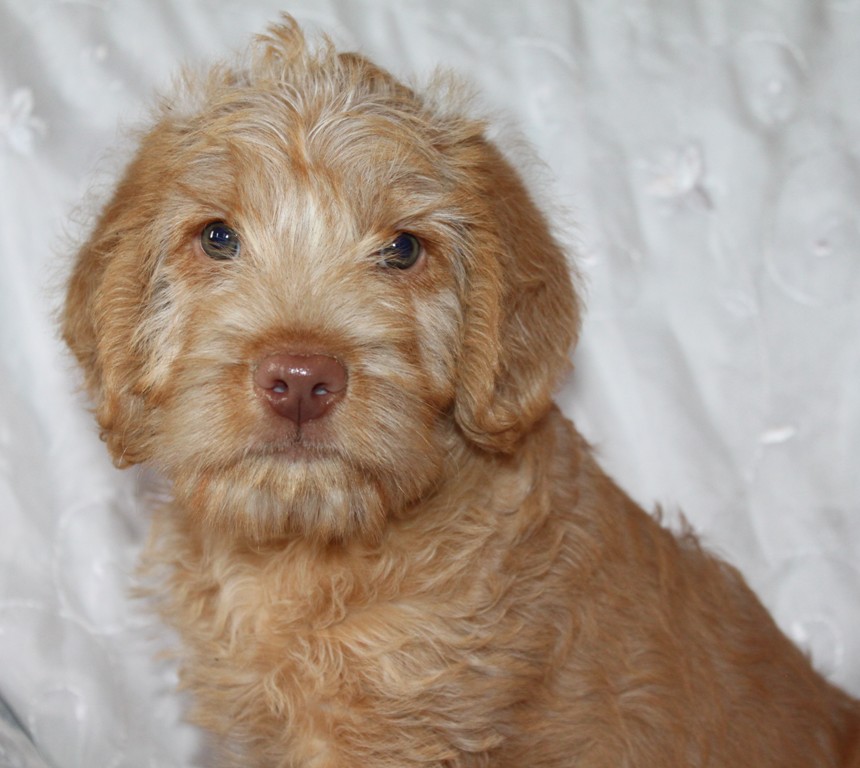
F2 Cobberdog puppy (6 weeks) 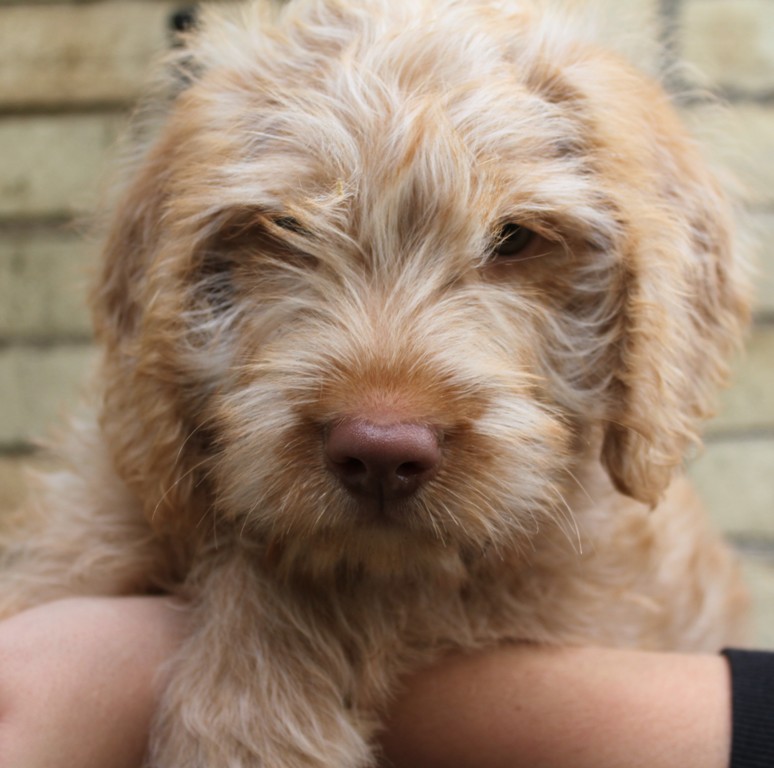
F2 Cobberdog puppy (8 weeks) 
F1 Storm puppy 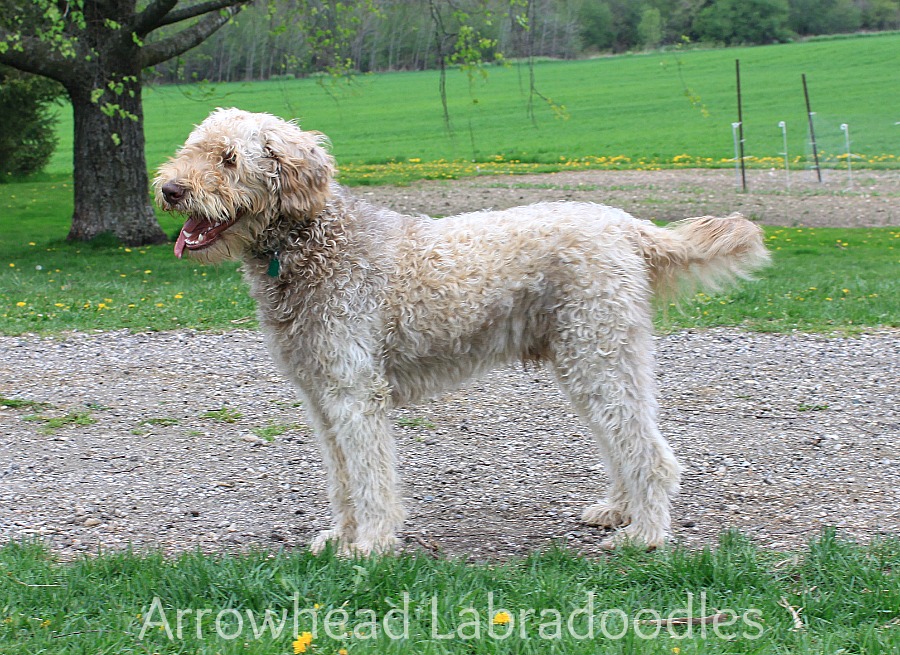
F1 Storm adolescent 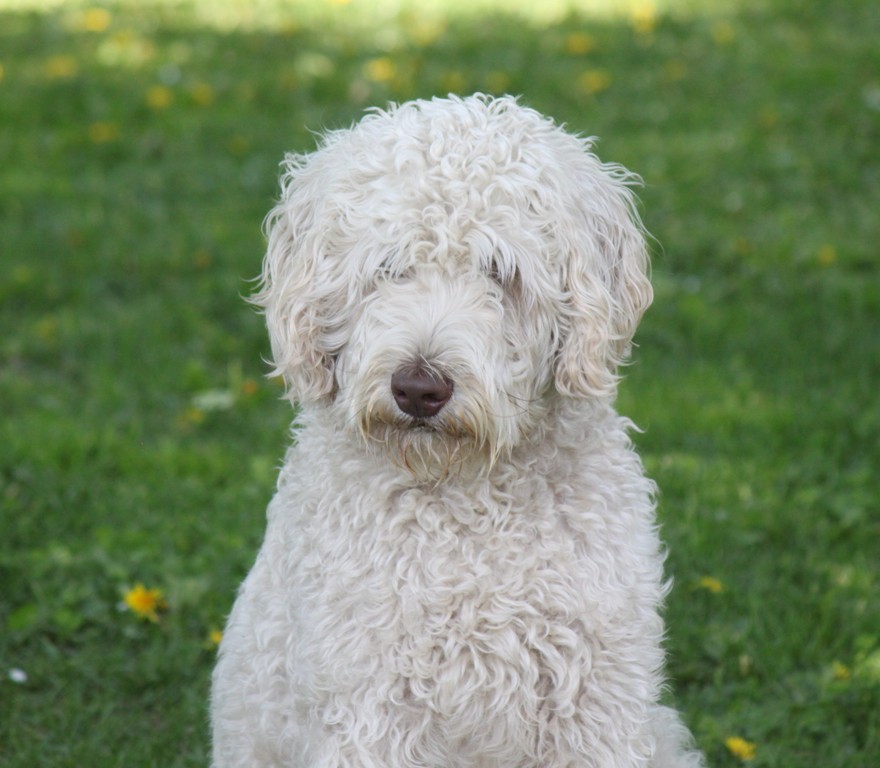
F1 Storm mature
The next type showed up in later generations often the second and third past the Wheaten infusion. They were cottony and fine as puppies and required quite a bit of brushing when the puppy coat was transitioning to maturity. As they matured they became loose thin fleecy curls that unfurl very easily and are open to the skin and extremely silky soft. Shedding was moderate when transitioning to the adult coat, and very minimal when adult coat was mature.
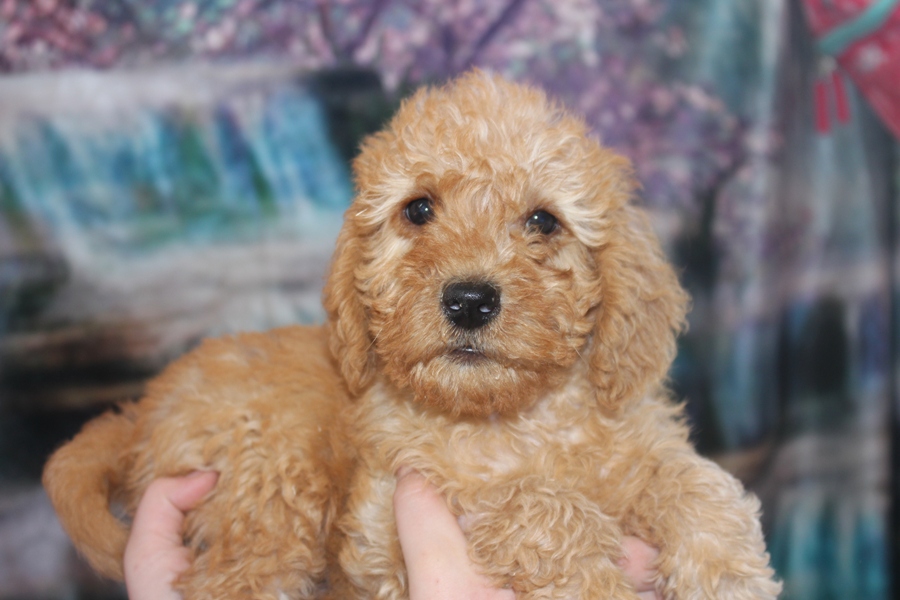
F2 Cobberdog puppy 
F2 Cobberdog Apple adolescent (puppy coat progressing to maturation) 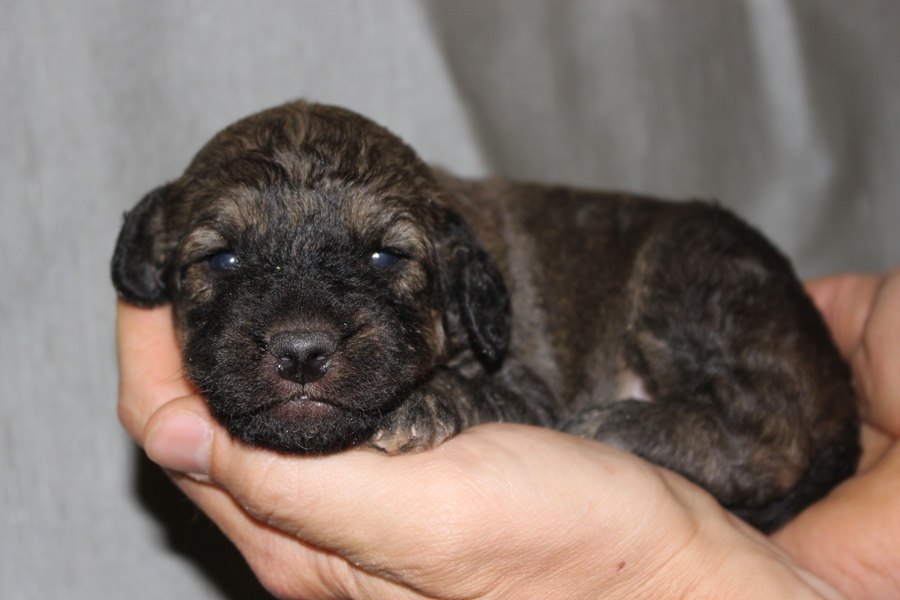
F2 Cobberdog Tasha infant (2 weeks) 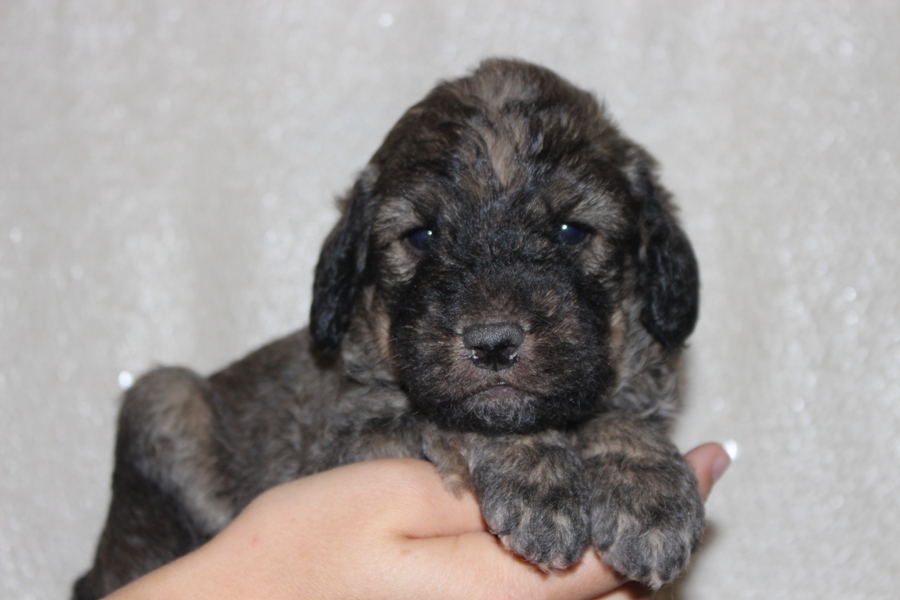
F2 Cobberdog Tasha puppy (3 weeks) 
F2 Cobberdog Tasha puppy (4 weeks) 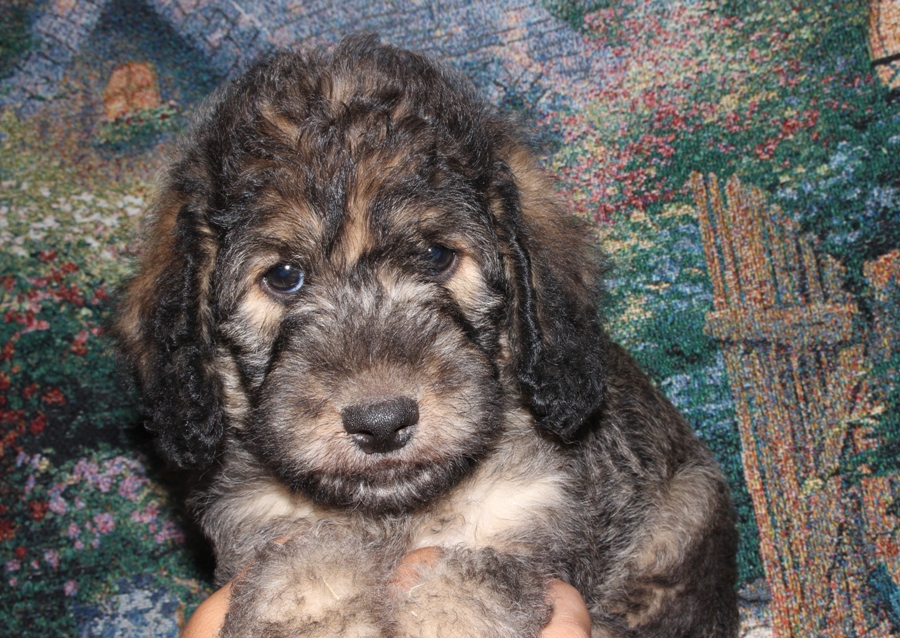
F2 Cobberdog Tasha puppy (6 weeks) 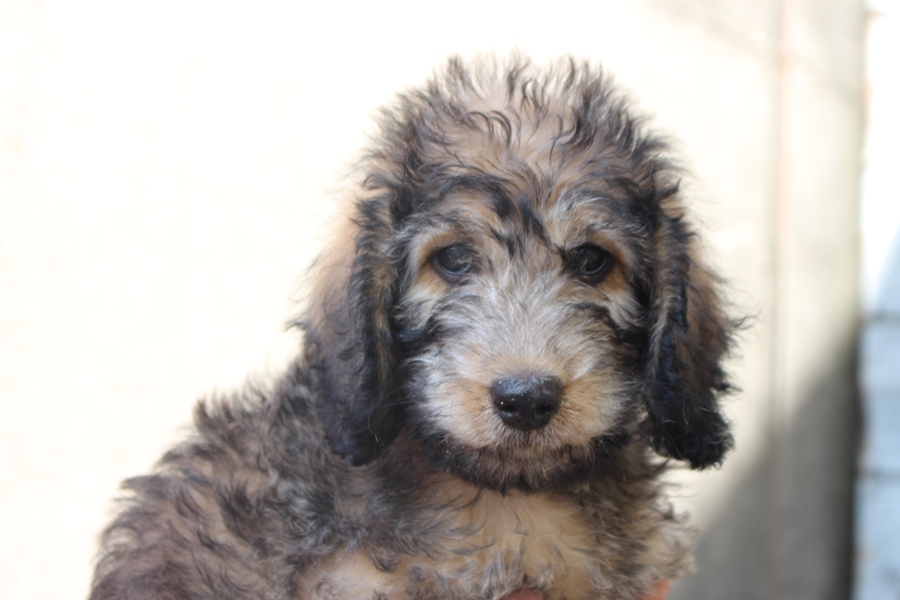
F2 Cobberdog Tasha puppy (8 weeks) 
F2 Cobberdog Tasha adolescent (transitioning from puppy coat) 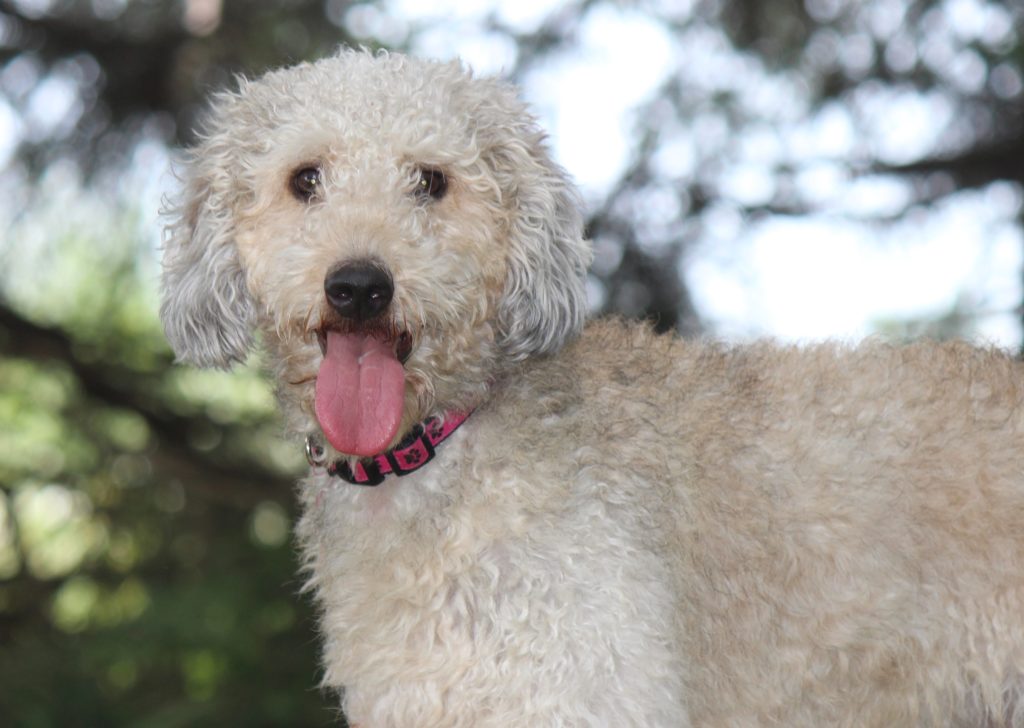
F2 Cobberdog Tasha nearing maturation (still has an abundance of kemp hairs)
The third coat type that is most prominent in the generations we are currently working on is a fleece that is fairly straight and ranges from very thin to full bodied, but not dense, and less cottony then early generations. Although becoming more consistent, there are still throwbacks to earlier generation types. Because intelligence, health and conformation are prioritized over colour, and coat type, the evolution of the coat has been taking longer then first thought. Below are pictures of the ideal Cobberdog coat type, a type that has been showing up with more frequency as the generations pass. These coat types tend to stay more consistent throughout the life of the dog and there is minimal change between the puppy and adult coat.
The Cobberdog coat types have been a challenge, but as we continue with the generations and now more advanced DNA tools we will be able to move progressively to more consistent full fleece and loose fleece coats, while at the same time maintaining our reserve gene pool of wool, loose wool, and spiral fleece coat (three types that were present before the wheaten and not discussed in detail in this article). One thing we do not have to contend with in our Cobberdog genetics that is common in the Australian Cobberdog gene base is the improper coat, this is a coat gene that throws back to earlier shedding breeds that made up the Australian Labradoodle, see more about the foundation breeds on australiancobberdog.com. The dogs that carry this gene randomly produce puppies with flat, shedding coats, and while they are as intelligent as proper coated Australian Cobberdogs, their visual appearance is greatly compromised. IC is accepted in the Australian Cobberdog breed, but the gene is not present and will not be tolerated in the Cobberdogs we are developing and breeding at Arrowhead. We are continuously working on the improvement of our genetics, and hope you find this article useful in your research. Till next time~Luke

